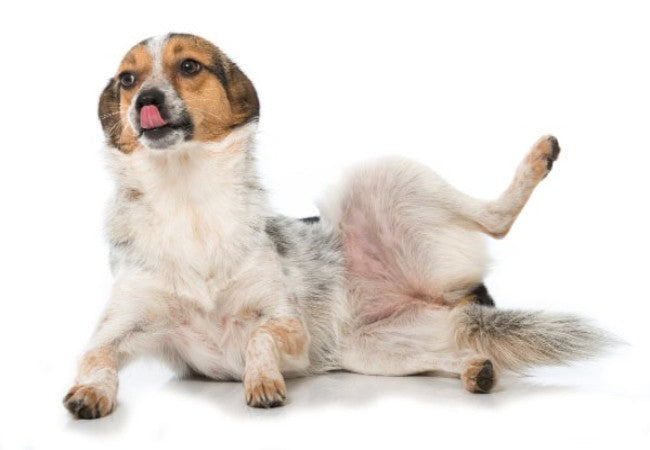Recessed (Hooded) Vulva in Dogs: Vet’s 2025 Guide to Prevention, Symptoms & Care 🩺🐶

In this article
Recessed (Hooded) Vulva in Dogs: Vet’s 2025 Guide to Prevention, Symptoms & Care 🩺🐶
By Dr. Duncan Houston BVSc
Hello—I’m Dr Duncan Houston BVSc, veterinarian and Ask A Vet founder. A recessed or hooded vulva is when extra skin folds over the vulval opening. This creates a warm, moist “pocket” that can trap debris and urine, increasing risk of skin inflammation, vaginitis, and urinary tract infections. This vet‑approved guide covers:
- Definition & causes
- Signs & risks
- Diagnosis & testing
- Medical management
- Surgical correction
- Recovery & prognosis
- Ask A Vet tracking tools
1. What Is a Recessed Vulva?
A recessed (hooded) vulva occurs when skin folds partially cover the vulva, trapping moisture and making it a breeding ground for bacteria and yeast.
2. Who Is at Risk?
- Medium to large breeds and spayed females—obesity worsens severity.
- May have a genetic predisposition, though not fully understood.
3. Symptoms & Health Risks
- Excessive licking or scooting to relieve discomfort.
- Moist, red, smelly perivulvar skin—signs of dysbiosis or infection.
- Frequent urination accidents, straining, blood in urine—indicative of UTIs.
- Urinary incontinence may occur due to inflammation.
4. Diagnosis & Testing
- Physical exam—vulva often hidden under skin folds.
- Urinalysis and cultures to check for infection.
- Skin tape test or cytology for bacterial/yeast detection.
- Additional diagnostics (CBC, biochemistry, ultrasound) for recurrent infections.
5. Medical Management
- Clean & dry folds daily with antiseptic wipes; use topical medications for dermatitis.
- Oral antibiotics for UTIs, tailored by culture results.
- Weight loss programs help reduce skin fold depth.
6. Surgical Correction
Vulvoplasty (episioplasty) removes excess tissue to expose the vulva, reducing moisture trapping and risk of recurrence.
- Surgery often combined with spay if needed.
- Success rate high in resolving chronic infections and UTIs.
7. Recovery & Long-Term Outlook
- Post-op care: antibiotics, pain relief, confinement, e‑collar for 10–14 days.
- Prognosis is excellent if underlying infections are cleared and surgery successful.
- Monitor weight and hygiene to prevent recurrence.
8. Ask A Vet Tools for Ongoing Care
- Track symptoms—appearance of skin, licking, accidents, odor
- Log hygiene routines, topical and oral medications
- Receive reminders for check-ups, weight control plans
- Alert to recurring signs indicating need for vet re-examination
📌 Final Thoughts from a Vet
A recessed vulva may seem minor but can lead to chronic skin or urinary issues. Early recognition, hygiene, weight management, and timely surgery make a dramatic difference. Ask A Vet provides tools to track care, symptoms, and treatment compliance—supporting your journey to your dog’s comfort and health. 🐾❤️






